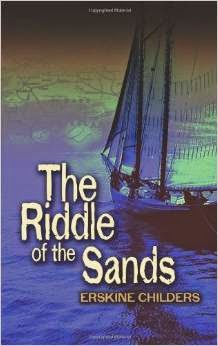Sacred Caher Island
 |
| Caher Island, like a giant stationary sperm whale |
Mystical historical treasure
 |
| Landing area at Portatemple |
One such island is Caher Island (Cathair na Naomh in Irish). There is no anchorage. We were passing by on a VERY rare VERY settled day with absolutely no swell and found the place where one can attempt a landing. We anchored in very deep water, about 70 feet, and felt that despite our relatively short scope, we could take the chance at a brief visit. This area on the edge of Middle Ground is known to be navigationally hazardous, with massive variations in depth causing upswelling and churning of waters. Passing through the area in unsettled conditions usually feels like being in a washing machine. Today it was flat calm and glassy. You don't pass up a chance like that.
The minute one steps on the island and catches sight of the small chapel with its altar table with its cursing stone and prayer stone holding the offerings of pilgrims over distant times, one cannot escape feeling reverence. It is said that anyone who removes any remnant from the island will be cursed. One can not escape feeling a connection with the past that exerts an enormously strong pull from somewhere otherworldly.
The island has an Early Christian monastery with the remains of a chapel in an enclosure and several carved slabs and crosses. It also has the remains of what would appears to be sixth and seventh century hermitages. Its name in Irish means fortified enclosure of the saints but who the monks were is not well defined. It is rumored that the monastic settlement was founded by followers of Colmcille. St. Patrick himself was supposed to have visited and sailors today are said to dip their sails in honour of those souls that have passed through this holy place.
We were awed.
The island has the remains of huts where the monks lived and penitential stations scattered around it's low lying fields. Its isolation serves the bird populations well and we were acutely aware of being watched wherever we went. We walked the island taking photos, caressing cold stones gently, imagining who had touched before. We marveled at the deep rock pools and the small lake and wondered if the monks bathed in their waters. We searched for the holy well but never did come across it. We stopped at the stations and marveled. We imagined what penance the monks felt they had to perform and for what digression. The views of the surrounding islands and mainland are astounding. Yet we always kept an eye on our boats to make sure we'd be able to remove ourselves when the time came. It was not a place we wanted to be stranded in.
Sadly, the carved images are slowly eroding away but the feeling of connectivity remains on the island and in our hearts. That they could have lived here in such a desolate spot is a remarkable achievement in itself. We hope to return again, but for now feel privileged to have been given the chance to visit this hallowed place. It is in places like Caher Island that we feel the presence of God, not inside a church built by man but outside in the place created by God. And the ancient remains of human endeavor really accentuate our fleeting presence here. It causes us to ask questions to which there are no answers in this life.
And then we weigh anchor and move on.
And then we weigh anchor and move on.
 |
| Add caption |
 |
| Fallen carving |
 |
| Fallen carving below wall |
 |
| The altar. |
 |
| Cursing Stone and offerings, some very old. |
 |
| The main mound |
 |
| Inishturk in the background |
 |
| Lough Kinkeel |
A description of the artifacts on Caher Island was read November 27, 1900 by T.W. Rolleston and published as follows:
The Church of St. Patrick on Caher Island, County Mayo
The Journal of the Royal Society of Antiquaries of Ireland
Fifth Series, Vol. 10, No. 4 (Dec. 31, 1900), pp. 357-363
Published by: Royal Society of Antiquaries of Ireland
Article Stable URL:http://www.jstor.org/stable/25507092
Fifth Series, Vol. 10, No. 4 (Dec. 31, 1900), pp. 357-363
Published by: Royal Society of Antiquaries of Ireland
Article Stable URL:http://www.jstor.org/stable/25507092




















Comments
Post a Comment